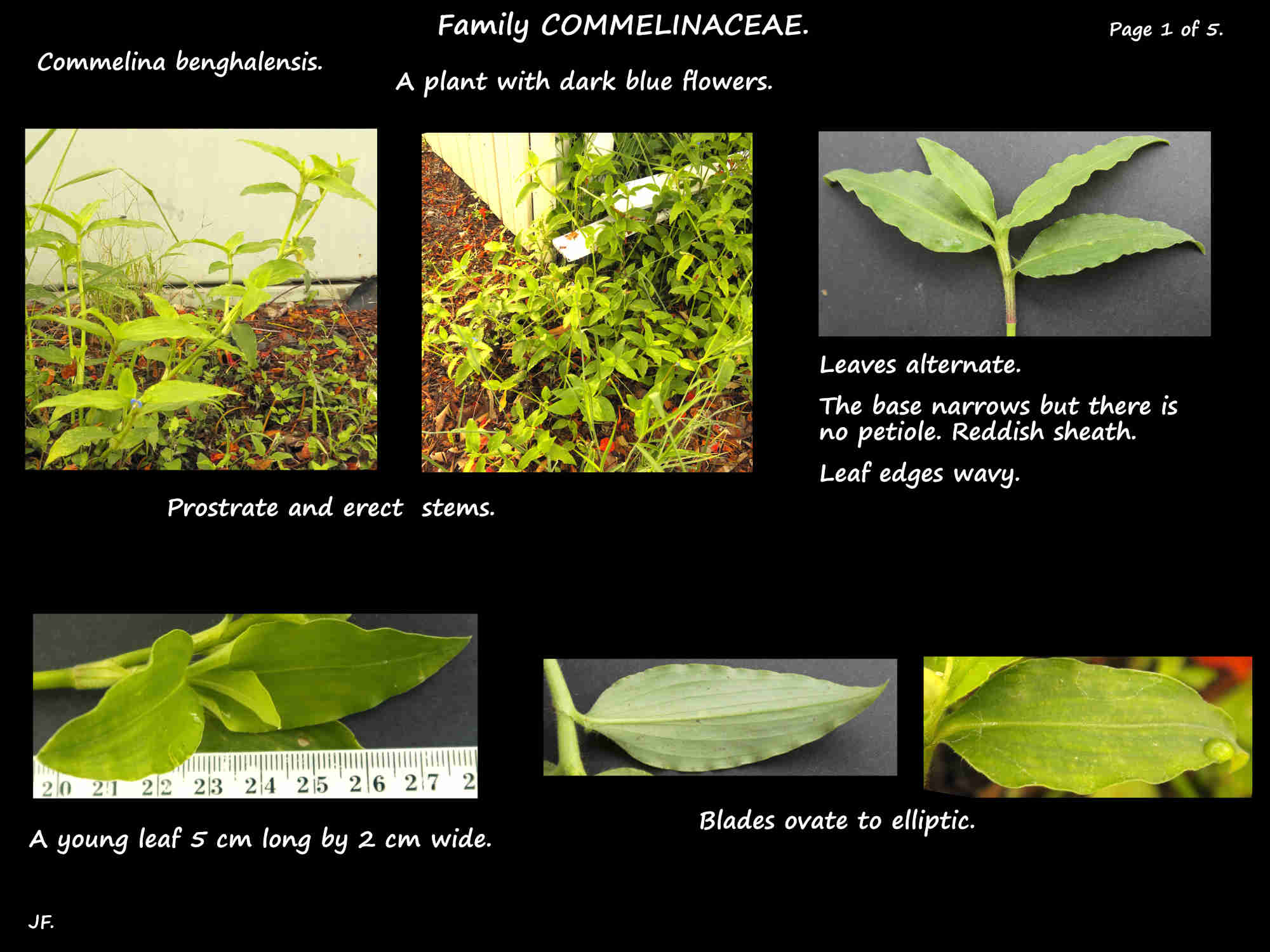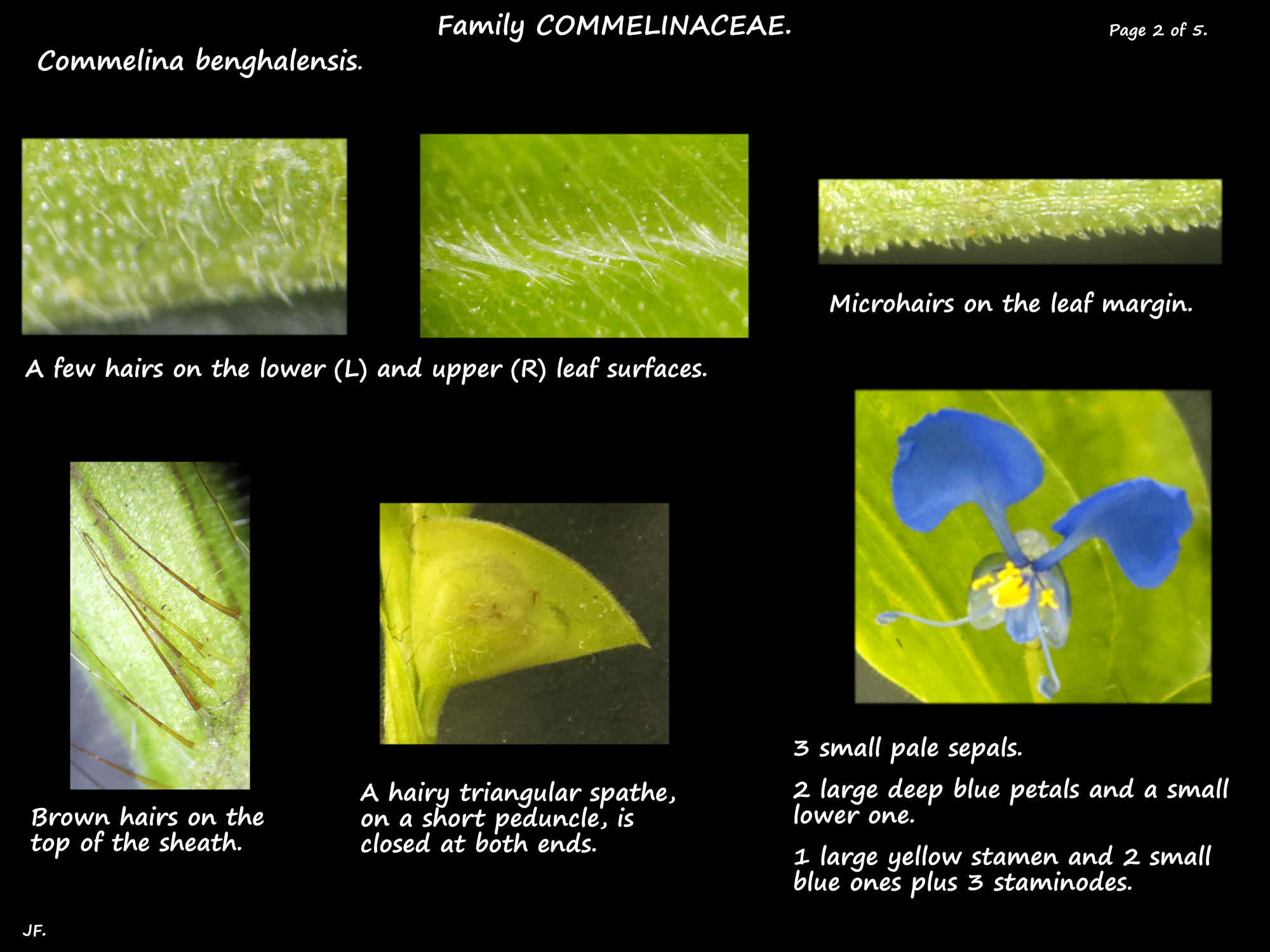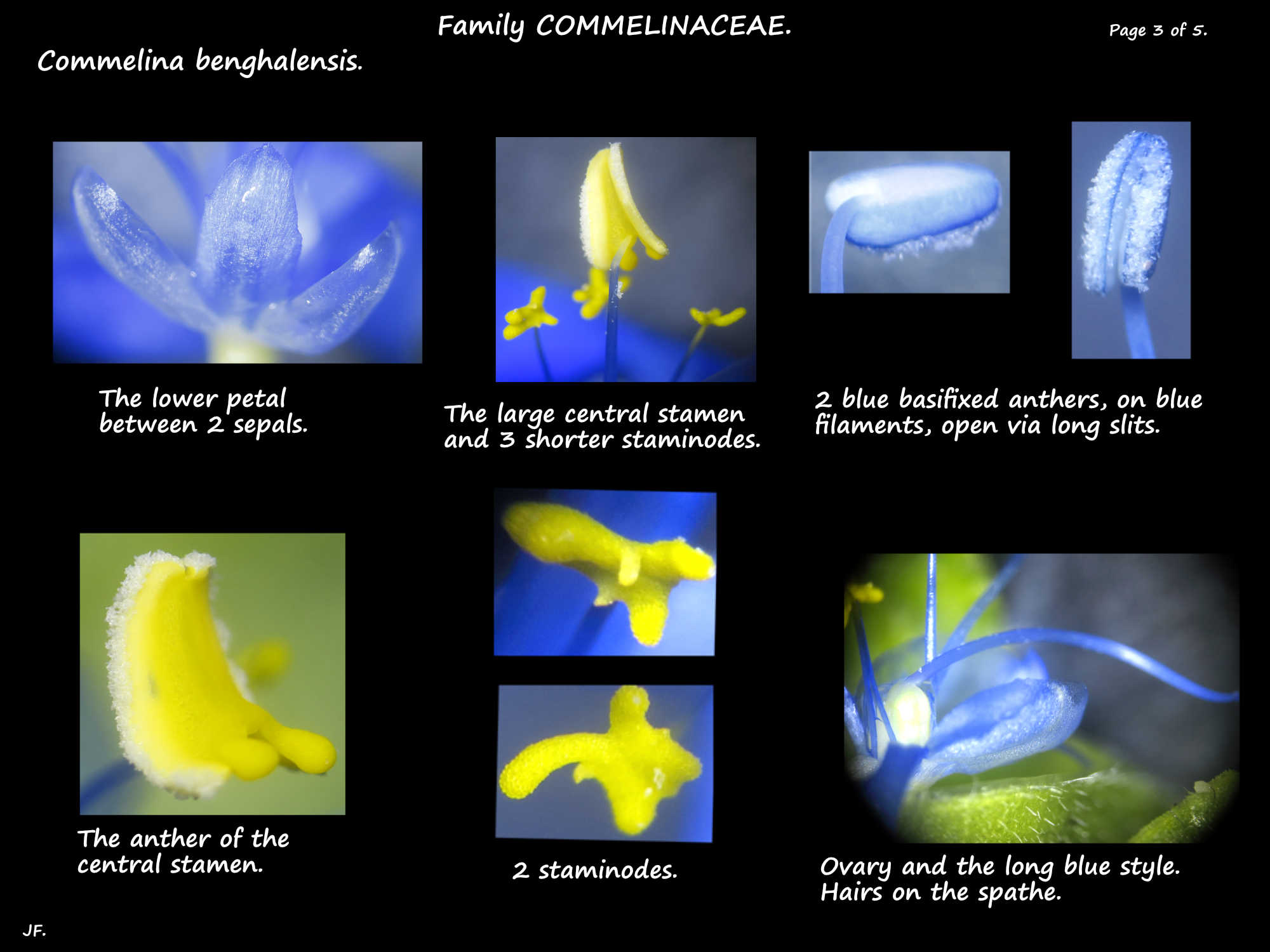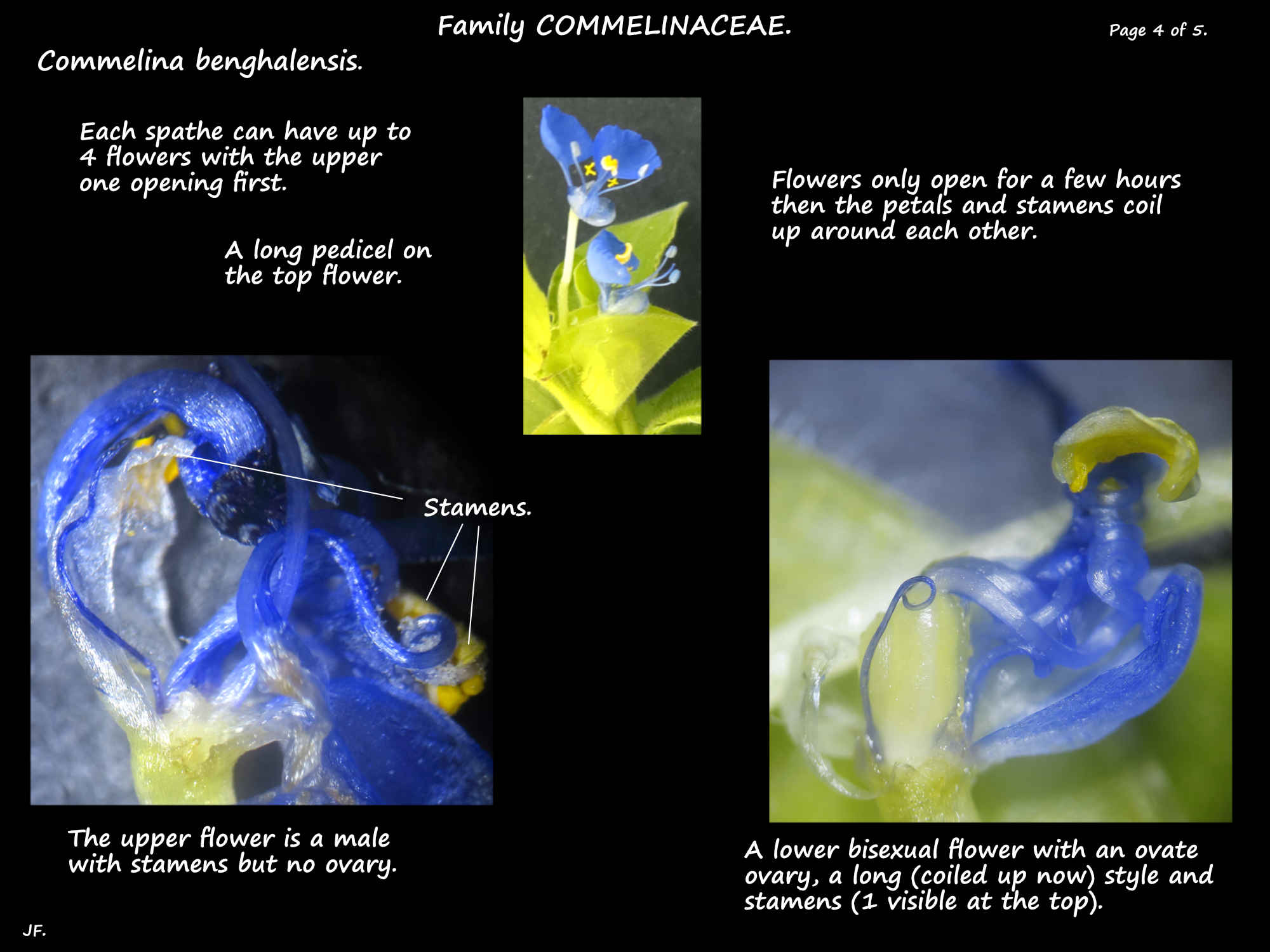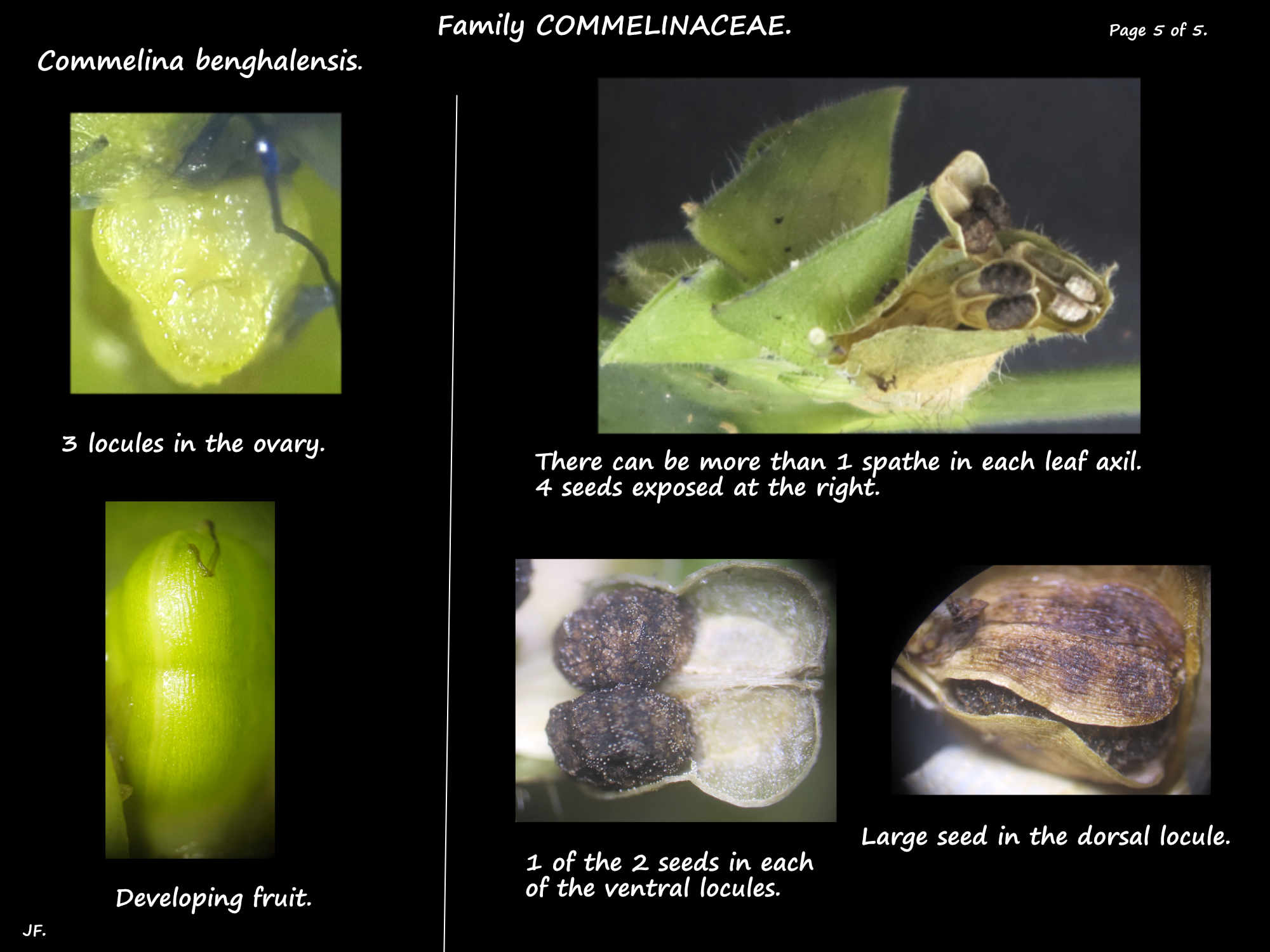Commelina benghalensis.
Family Commelinaceae.
The Dayflower or Hairy commelina is an introduced species that is naturalised in Australia and an
environmental weed in S. E. Queensland.
They are herbaceous perennials with long branching prostrate stems and some semi-erect ones up to 40 cm long.
The cylindrical stems are fleshy, slightly hairy and they root at the nodes.
Plants sometimes also have white underground stems or rhizomes with small leaves and flowers that are self-pollinating.
The alternately arranged, usually hairy leaves are up to 9 (12) cm long and 5 cm wide.
The blades can be ovate to elliptic with a pointed tip and a wavy margin.
The base of the blade extends down the stem as a closed 1 to 2 cm long sheath.
The upper edge of the sheath has long reddish-brown (rarely colourless) hairs or bristles.
Axillary inflorescences are 2 small clusters of flowers (cymes) enclosed in a spathe.
There can be up to 3 spathes in each axil and they are closed at both ends.
On a peduncle under 1 cm long the spathe is around 1.5 cm long.
The outer surface has long and short white hairs.
The cymes can have 3 to 4 flowers but the upper cyme does not always develop being just a bristle.
There are 3 very small, slightly concave pale white or bluish sepals.
There are 3 petals with the upper 2 being much larger.
The upper pair, up to 8 mm long have a rounded lobe and a narrow claw base.
The lower petal is elliptic to obovate and only a few mms long.
The petals are seen described as a pale blue to almost white and as a deep blue.
Most flowers are bisexual with some male flowers at the top of the cymes.
There are 3 fertile stamens and 3 staminodes.
One of the fertile stamens is longer than the other two and has a much larger anther.
This anther is yellow while the anthers of the smaller stamens are blue.
The staminodes have deformed yellow anthers often in the shape of a cross.
The superior ovary is formed from 3 fused carpels.
Two locules have 2 ovules and the third has one for a total of five.
There is a thin pale blue style with a small simple stigma.
The fruit are pale brown capsules around 5 mm long with 5 seeds.
There are 2 small seeds in each of the 2 dehiscent chambers and a larger seed in the indehiscent posterior chamber.
The black or dark brown ovoid seeds have a wrinkled surface.
The small ones are 2.5 mm long and the larger one 4 mm.
J.F.
